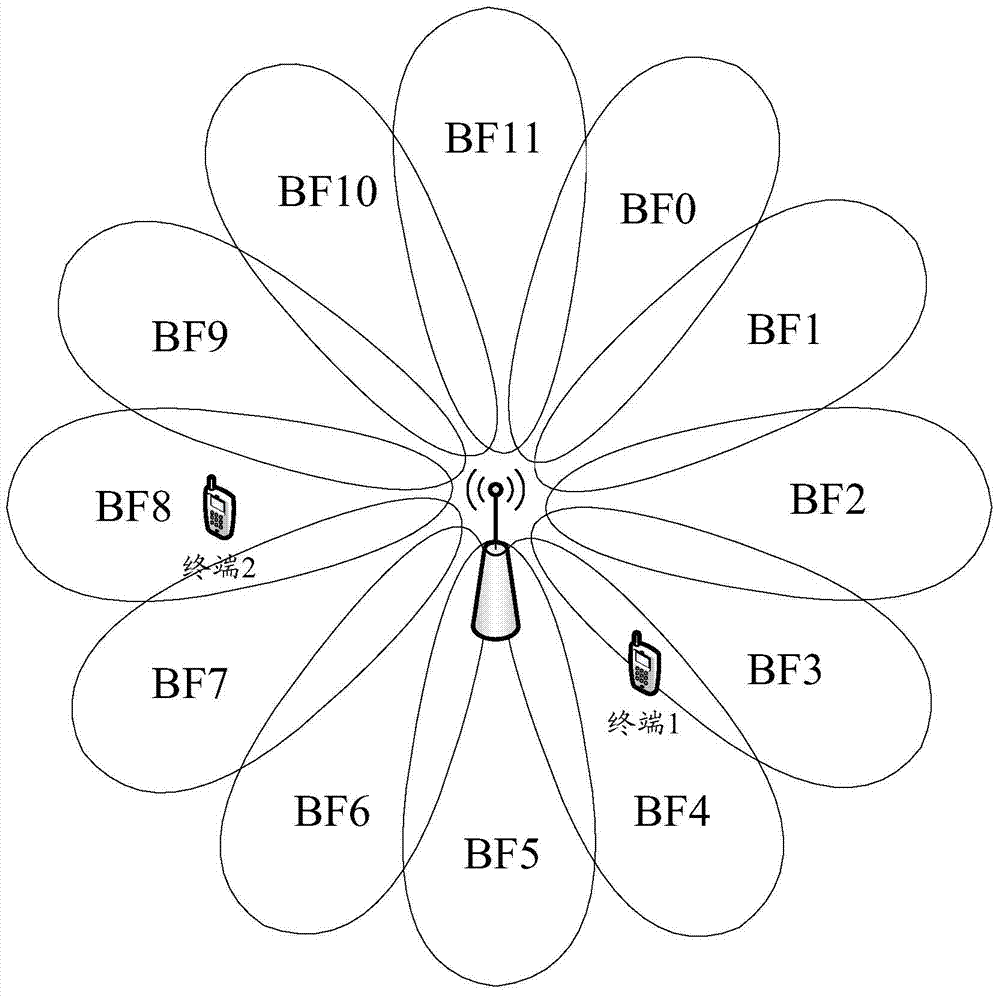Wave beam recognition method, related device and system for MIMO beam forming communication system
A communication system and beamforming technology, which is applied in the field of beam identification in the MIMO beamforming communication system, can solve the problems that the base station cannot use the beam to cover the terminal, the terminal cannot reach the coverage area of the base station, and the base station cannot know the terminal, etc.
- Summary
- Abstract
- Description
- Claims
- Application Information
AI Technical Summary
Problems solved by technology
Method used
Image
Examples
Embodiment 1
[0134] In this embodiment, it is assumed that the maximum number of beams supported by the base station is N, each beam is sent periodically, and the sending periods of the N beams are the same, and N training time-domain units are divided into each sending period, and N The training time-domain units form a training cycle, each training time-domain unit corresponds to a beam, and each training time-domain unit corresponds to an index number. Here, N=12 is taken as an example, as shown in Figure 5(a) and Figure 5(b) shown. Adjacent training time-domain units can be continuous in time, as shown in Figure 5(a); adjacent training time-domain units can also have a certain interval in time, as shown in Figure 5(b).
[0135] Assuming that the transmission cycle of the beam is T, there should be T≥N*t to ensure that there is enough time in each transmission cycle to send the beam training signal in each direction supported by the base station once; where t represents the training tim...
Embodiment 2
[0143] In this embodiment, it is assumed that the maximum number of beams supported by the base station is N, and each beam is transmitted periodically, but the transmission period corresponding to each beam is different, that is, there are N different transmission periods, corresponding to N beams respectively, N The sending cycles are denoted as t 0 ~t N-1 . A training time-domain unit is respectively divided in N different sending periods, and each training unit corresponds to an index number. The sending period of each beam may also be referred to as a time interval for sending the beam, and there are N different time intervals in total. In order to avoid false detection between beams, it is necessary to ensure that the time interval between different beams is not equal to the sending period of any beam; for example, assuming that there are two beams, the first beam and the second beam, the sending period of the first beam The transmission period of the second beam is 5...
Embodiment 3
[0152] In this embodiment, it is assumed that the maximum number of beams supported by the base station is N, and beam training is performed according to the training period. Specifically, each beam training signal is sent twice in a training period, and different beams are sent twice in the same training period. The corresponding time-domain intervals for sending are different; that is to say, 2N training time-domain units need to be divided into one training period, two as a group, a total of N groups, each beam corresponds to a group, and two training units in each group The time domain interval of the time domain unit is different from other groups, that is, each beam corresponds to a time domain interval, and there are N different time domain intervals in total, and the N time domain intervals are respectively recorded as t 0 ~t N-1 . In order to avoid false detection between beams, it is necessary to ensure that the time domain interval between different beams is not eq...
PUM
 Login to View More
Login to View More Abstract
Description
Claims
Application Information
 Login to View More
Login to View More - R&D
- Intellectual Property
- Life Sciences
- Materials
- Tech Scout
- Unparalleled Data Quality
- Higher Quality Content
- 60% Fewer Hallucinations
Browse by: Latest US Patents, China's latest patents, Technical Efficacy Thesaurus, Application Domain, Technology Topic, Popular Technical Reports.
© 2025 PatSnap. All rights reserved.Legal|Privacy policy|Modern Slavery Act Transparency Statement|Sitemap|About US| Contact US: help@patsnap.com



